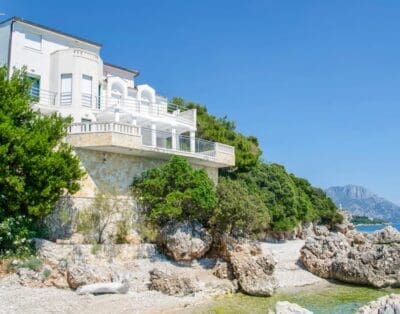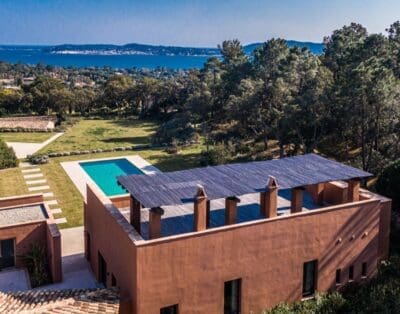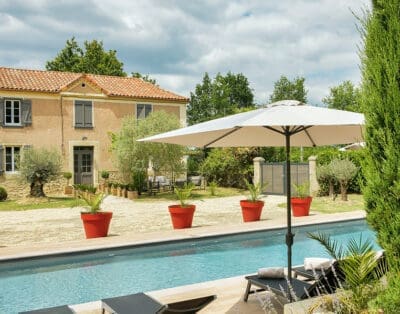Poland: Rich In History, Rich In Food
Do you know your Pierogi from your Bigos, or your Kluski from your Zurek? Well, it might come as a bit of a surprise to many but the city of Kraków (Cracow in English) in southern Poland near the border to the Czech Republic became the first recipient of the ‘European Capital of Gastronomic Culture’ for 2019.
It might not exactly spring to mind as a hotbed of gastronomic delight compared to Paris, Vienna or Rome, but just digest this: the second largest city and one of the oldest in Poland dating back to the 7th century, was formally awarded this prestigious title by the European Gastronomic Academy.
This marked the first time it has ever been awarded. And, in the final analysis the city beat the likes of Copenhagen, Florence, Lyon and San Sebastian among others. Somewhat contentious one might say, although Kraków has been awarded a number of top international rankings such as first place in the Top City-break destinations (2014) survey carried out British Which?
That said, let’s delve a bit deeper to see what Polish culinary specialities are on offer when making a trip to the central eastern European country.
The cuisine of Poland has been greatly influenced by its neighbours and the many cultures that have inhabited it over the country’s long history. Dishes tend to quite hearty and there is a large focus on meat – mostly beef, chicken and pork. Soup is a traditional accompaniment to meals in Poland and they tend to be thick and rich. Bread is also an important part of the cuisine and usually it has a crunchy crust with a not too soft inside.
Now, if you had been down in Greenwich earlier this year in mid-March by the Cutty Sark you might well have noticed a rather imposing tallship, ‘The gift of the Youth’ (Dar Młodzieży), which had sailed around the world on a 10-month journey stopping off at 22 ports from Los Angeles to Osaka, to mark Poland’s 100th anniversary of regaining its independence. The ship was launched in November 1981 and designed by Zygmunt Choreń, a crew member in the Whitbread Round The World Race 1973-74 on the boat Otago.
On board, various dignitaries including the Polish ambassador to the UK, Arkady Rzegocki, and Poland’s Minister of Maritime Economy and Inland Navigation, Marek Gróbarczyk – were present. And, guests spanning tour operators, travel journalists, Polish diaspora as well as veterans were invited to sample some Polish food and wine.
It was certainly packed that evening on this training ship, which had seen around a thousand young sailors take part in the expedition before reaching its last stop in London before heading back to Gdynia, a city in the Pomeranian province on the Baltic coast and forming a conurbation with the spa town of Sopot.
As an aside, the fictional character and Ernst Stavro Blofeld from the James Bond 007 series of novels and films created by Ian Fleming (played by Donald Pleasance in ‘You Only Live Twice’, 1967), was according to the novels born in Gdingen (1908), then under Imperial German rule (now Gdynia).
Hubert Gonera, managing director of marketing firm Land Brand (see: www.landbrand.pl) based in Poznan, was on hand to give an overview of Polish gastronomy on the top deck of the Dar Młodzieży amid the assembled throng.
In the light of Cracow being bestowed with its gastronomic title, Gonera said using a slide presentation: “This presents a special opportunity to visit Poland and get to know our gastronomic taste and culinary style. Given that Cracow is a gateway for the region (Lesser Poland) with a very rich culture. And, we say that you reach somebody’s heart through the stomach.”
He explained that there were at least “25 culinary trials” taking placing across Poland over the course of 2019. So, one doesn’t need to confine your visit just to Krakow.
Today, there are in fact 14 food products made in Poland that have the title of ‘Protected Origin of Designation’ (POD), which indicates a level of uniqueness and covers products that are produced, processed and prepared in a specific area, using a particular method (usually traditional).
Lesser Poland Voivodeship (or Province) comprises an area of 15,108 sq. kilometres (5,833 sq. miles) and almost all of it lies in the Vistula River catchment area.
The city of Kraków, once the seat of Polish kings and by far the most visited city in Poland, had also been one of the European Cities of Culture in 2000 along with eight other cities in the Millennium year – along with Avignon, Bergen, Bologna, Brussels, Helsinki, Prague, Reykjavik and Santiago de Compostela.
While the food might be pulling factor to make a trip in the first palace, there are a number of notable points of interest inside and outside the city.
Within the town, the vaults of the Wawel Cathedral are the burial site of Polish kings, with last kings of the Jagiellonian dynasty lying interred beneath the golden dome of the Sigismund Chapel. One can also find saints, poets and distinguished military leaders buried here.
The Old Town is surrounded by the green belt of Planty Park, the Jagiellonian University (see: https://bit.ly/1NelSNz for interiors), founded in 1364 by Casimir III the Great that is the oldest university in Poland and second oldest university in Central Europe, and the Wawel Royal Castle (whose highlights include the treasury, armoury, luxurious staterooms and royal apartments) and Cathedral.
The upper floor of the Cloth Hall (Sukien-nice) near the Main Market square houses a gallery of nineteenth century Polish art. The Jewish quarter of Kazimierz, which hosts a Jewish Cultural Festival each summer, is also on the UNESCO World Heritage List. The town is home to seven synagogues, a Jewish museum, and a cemetery dating back to the 16th century. The movie Schindler’s List was filmed in this atmospheric town.
Outside the town one might wish to see the Wieliczka salt mine, the Tatra Mountains some 100 km (62 miles) away to the south, the historic city of Częstochowa (to north-west), the well-preserved former Nazi concentration camp at Auschwitz, and Ojcowski National Park, which includes the Renaissance Castle at Pieskowa Skała.
Popular Polish Dishes
* Bigos: A traditional Polish stew, Bigos is made from sauerkraut and meat (usually kielbasa). It is often referred to as “hunter’s stew” because of the wild meat used.
* Golabki: These are cabbage rolls that are filled with meat (pork or beef), chopped onions and rice. A spicy tomato sauce traditionally accompanies them.
* Golonka: The Polish name of a dish of boiled ham hock known in German as Eisbein.
* Gulasz: This is another popular stew that has meat, noodles and potatoes in it. Gulasz is seasoned with paprika.
* Kielbasa: There are several varieties of this Polish sausage, making it incredibly popular.
* Kluski (singular: klusek or kluska): Is a generic Polish name for all kinds of soft, mushy dumplings, usually without a filling. They are distinct from pierogi (see below) and stand-alone pasta dishes. At times the word also refers to noodles and pasta, especially when they are served in soup.
* Krupnik: A thick soup made from meat broth or vegetable, which contains potatoes and barley groats (kasza jęczmienna, archaically called krupy – hence the name). Common additional ingredients include włoszczyzna (carrots, parsley, leek and celery), onion, meat, and dried mushrooms.
* Pierogi: These are Polish dumplings that are filled with various ingredients including potatoes, meat, cheese, mushrooms, sauerkraut, and more, served with sour cream. There is also a sweeter version that is filled with fruits and topped with sugar.
* Zurek: A Polish soup that contains stock, bacon, onions, mushrooms and sour cream as well as kwas (a kind of fermented rye).
Fine Dining Experiences
You won’t find it hard to find good restaurants in Krakow. Some to be recommended include Copernicus, which is located inside one of Kraków’s most exclusive hotels. A member of the exclusive French hotel association Relais & Châteaux, it has been a firm favourite of visiting dignitaries with former guests including George W. Bush and the Prince of Wales.
Hotel Copernicus as a building dates back to the early 16th century and still retains many original architectural elements such as medieval brickwork, Renaissance carpentry, period ceilings and wall frescoes – some that go back to the early 1500s. Check out of the rooftop terrace for views of Wawel castle.
Polish Capital of Commerce: Poznań
From Poznań, a city in west-central Poland known for its universities, an old town with Renaissance-style and the Poznań International Trade Fair Centre that has successfully hosted large international events, comes Rogale Marcinskie, a special kind of pastry with sanded nuts, topped with a sugary glaze and filled with poppy and almond paste.
It is prepared specially for 11 November when Saint Marcin’s (Martin) Day is celebrated in the country. Accidentally this is also Poland’s Independence Day (the end of WWI).
The tradition of St. Martin’s croissants, which was started by the Zamek cultural centre in 1994, has survived until today in Poznań. On the day itself substantial quantities are consumed – around 250 tons are sold – and then between November 9 and 11 about 400 tons. They are also bought as gifts as gifts during the year. And, if you believe in the local legend their inventor was one Josef Melzer, who prayed to St Martin for pastry ideas to honour the saint’s holiday.
In the consciousness of the inhabitants of Poznań, situated in the most economically developed region of Poland (closer to Berlin than to Warsaw), the crescent (a half moon shape) is closely linked to the celebration of St. Martin, who is also the patron saint of Poznań’s main street. It weighs from 200g-250g, with its width being 10cm and height 7cm (at the widest part).
Though much of their cuisine in this area is shared with Poland as a whole, Poznań and the wider Wielkopolska area do exhibit some of the most distinctive regional dishes in the nation.
For example, potatoes with gzik, the latter which is made of quark cheese mixed together with cream and chives or radish. It’s almost ubiquitous as a starter in Poznań’s Polish restaurants and served with jacket potatoes, this nineteenth century dish is known as ‘pyra z gzikiem’.
Duck has also recently made its way here in Wielkopolska. Its kaczka is traditionally served roasted along with apples, cabbage and dumplings. For the past 10 years or so, Poznań has held an official ‘Goose for St Martin’s Day’ food festival.
With its charming Old Town, the streets all meet in the Old Square where the renaissance Town Hall overlooks the area. A clock here that was installed in 1551 entertains with mechanical goat figurines that emerge and butt heads.
The route that wends its way from the Old Town to Ostrów Tumski (Cathedral Island) between two branches of the river Warta. It is listed as one of Poland’s official national Historic Monuments (Pomnik hostorii), is a popular tourist walk known as the Royal-Imperial Route.
Toruń: Home of Corpernicus
Of course we should not overlook mentioning Toruń, the birthplace of astronomer Nicolaus Copernicus and one of the oldest cities in Poland in northern-central Poland on the Vistula River, with its first settlement dating back to the eighth century – before Teutonic Knights expanded it in 1233.
Back in 1997 the medieval part of the city was designated a UNESCO World Heritage Site and decade later the Old Town was added to the list of Seven Wonders of Poland. Toruń is renowned for its Museum of Gingerbread and visitors can even make them themselves at workshops organised inside a sixteenth century gingerbread bakery.
Polish Winemaking Capital
Now if wine is your thing, then head to Zielona Góra (Grünberg in Schlesien in German/Green Hill in English), a city in western Poland with around 140,000 inhabitants. With a favourable geographical position and located not far from the Polish-German border, the region is also closely associated with vineyards and holds an annual Wine Fest (Winobranie) each September that dates back to 1862.
Today, wine production in Poland is an industry with 151 officially registered wineries (as of the 2016/17 season) to sell and produce grape table wine in the country.
Whilst in the past, wine production was concentrated mainly in southern Poland (Lublin, Lower Silesian, Lesser Poland and Subcarpathian voivodeship), nowadays it is produced all across the country. For example, Winnica Jura is a new project currently underway to establish a 6-hectare organic vineyard near Kraków (see: http://winnicajura.pl/).
It is an absolute must to taste the wine here when visiting the city of Zielona Góra. Traditions related to wine making and production are shown in the Museum of Wine (see: www.muzeumwina.pl). Highlighting the extent of the areas greenness, over half the metropolitan area comprises woods.
Beer & Wódka
When it comes to alcoholic drinks, Poland is known for its beer (top brands being Tyskie, Żywiec and Okocim) and vodka (or wódka). But it’s important to note that Poles don’t mix vodka with anything, instead preferring to drink it neat. As with beer there are many flavours of vodka available. And, when leaving a tip for good service in Poland, 10%-15% is generally the standard practice and appreciated.
For more information about travel to Poland contact the Polish National Tourist Office or see this website link: www.poland.travel.
About the author: Roger Aitken is a freelance writer who contributes to a number of titles and was a former FT staff writer. In 2014 he was awarded a press prize from Czech Tourism on the 25th anniversary of the Velvet Revolution.







